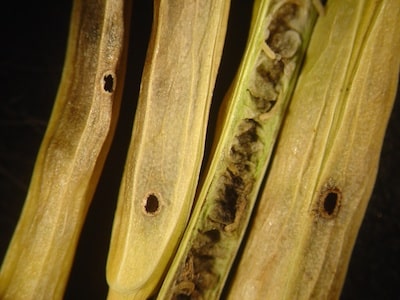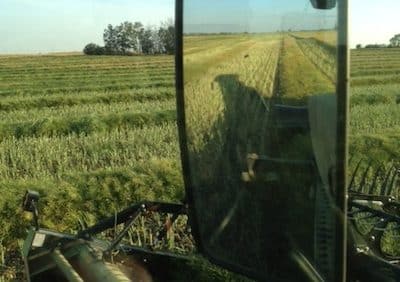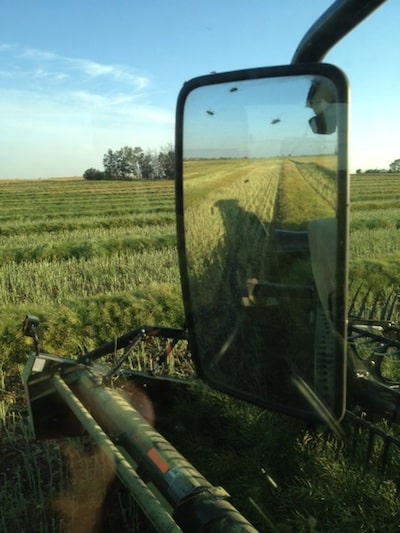
Yields are lower than expected for some canola fields harvested so far this year, especially in Manitoba and eastern Saskatchewan. Given the broad range of threats reported this year, including insects, disease and heat during flowering, this may not be surprising. Growers and agronomists may be able to find clues to explain lower yields by looking at the plants, pods and seeds. In some cases, growers may be able to pick up a few management tips that could reduce these losses next year. Weather records from sources like the AgroClimatic Information Service in Alberta for nearby stations can help pinpoint conditions that affected yield. Look at number of days with maximum temperatures above 28-30 C from bolting stage through ripening, extended periods of rainfall and high humidity during flowering (disease threat), etc. Warm nights that stayed near 20 C or higher can also aggravate symptoms of heat stress.
Here’s what to look for in unharvested swaths to get an idea where losses occurred and what stresses and pests may have reduced yield potential:
Did the pods form? The swath may be thick, but look at the stems and look for missing pods. If pods at the bottom and top of a stem look good, but there are lots of blanks in the middle, this is a sign of heat stress during flowering. After the heat stress is over, hormone balance can return and plants will start podding normally again. This will be fairly consistent throughout the field, and there’s not much you could have done about it. If you’re seeing a lot of missing pods, but they are here and there up the stem and some parts of the field are worse than others, this is more likely insect damage. Lygus feeding on buds can cause some blanks up a stem. Late season bertha armyworm and grasshopper feeding can remove enough pods to cause noticeable yield loss.
Did pods fill properly? If pods are there, but seeds seem to be missing, misshapen or damaged, this could have a number of causes. Lack of moisture can limit seed yield in a pod. If pods are there but completely empty, that is usually the result of a hormone response to environmental stress such as heat or drought. Compare yields from field to field. Are fields that received more moisture doing better? That would be a good sign that moisture was a key cause. Aster yellows can cause misshapen seeds and sprouting, even in a pod that appears normal. Lygus feeding or cabbage seedpod weevil feeding on pods can cause seed damage. Alternaria on pods can damage seeds within a pod, or cause pods to shatter prematurely.
Are seeds there but small or shriveled? Lack of moisture during pod fill will cause this. As can severe stem or root diseases such as sclerotinia, blackleg, clubroot and brown girdling root rot — any disease that reduces moisture movement up the plant. Uneven crop maturity can also contribute. If seeds on the mainstem are large and healthy while seeds on side branches are small and shriveled, the crop may have been swathed too early and immature seeds on side branches dried up.
Vegetation index. StatsCan’s latest yield estimates are based on a vegetation index and are broken down by census area. If your area had the vegetation index for a 35-bushel crop — see the Prairie-wide estimates by census area — but yielded only 25, that increases the likelihood that something besides environmental conditions was a contributing factor in limiting yield.

